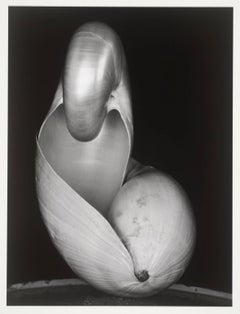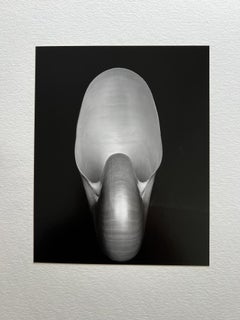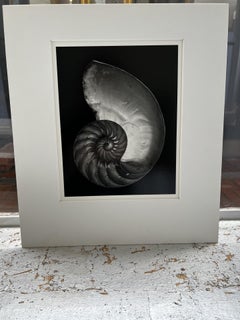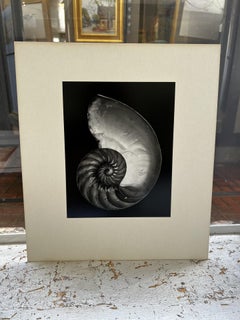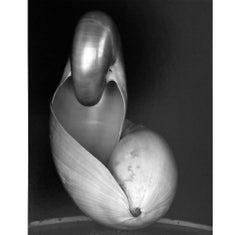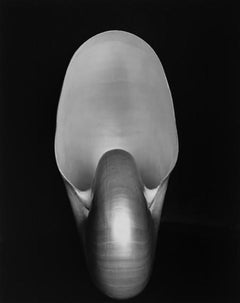Edward Weston Shell
Early 20th Century Photography
Silver Gelatin
Early 20th Century Black and White Photography
Silver Gelatin
1920s Black and White Photography
Silver Gelatin
1920s Black and White Photography
Silver Gelatin
1920s Black and White Photography
Silver Gelatin
Recent Sales
Early 20th Century Photography
Silver Gelatin
Silver Gelatin
1930s Black and White Photography
Silver Gelatin
1930s Black and White Photography
Silver Gelatin
Edward Weston Shell For Sale on 1stDibs
How Much is a Edward Weston Shell?
Edward Weston for sale on 1stDibs
Edward Weston was an American photographer and cofounder of Group f/64. Most of his work was done using an 8-by-10-inch view camera.
In 1902, Weston received his first camera for his 16th birthday, a Kodak Bull's-Eye #2, and began taking photographs in parks in Chicago and at his aunt's farm. The young Weston met with quick success, and his photographs were already being exhibited at the Chicago Art Institute merely a year later, in 1903. Weston worked mainly with nudes, still life — his shells and vegetable studies were especially important — and landscape subjects. After a few exhibitions of his works in New York, he went on to found Group f/64 in 1932 with fellow photographers Ansel Adams, Willard van Dyke and others. Weston became the first photographer ever to be selected for the Guggenheim Fellowship in 1937.
Stricken with Parkinson's disease, Weston made his last photographs at Point Lobos, California, in 1948. A 50th-anniversary portfolio of his work, printed by his son Brett, was published in 1952. Edward Weston died in his house on Wildcat Hill in Carmel, California, on January 1, 1958.
Find original Edward Weston photography on 1stDibs.
Finding the Right Black-white-photography for You
There’s a lot to love about black and white photography.
The unique and timeless quality of a black and white photograph accentuates any room. Some might argue that we’re naturally drawn to color photography because it’s the world we know best. This is a shared belief, particularly in the era of camera-phone photography, editing apps and the frenetic immediacy of sharing photos on social media. But when we look at black and white photography, we experience deep, rich shadows and tonal properties in a way that transfixes us. Composition and textures are crisp and engaging. We’re immediately drawn to the subjects of vintage street photography and continue to feel the emotional impact of decades-old photojournalism. The silhouettes of mountains in black and white landscape photography are particularly pronounced, while portrait photography and the skylines of urban cityscapes come to life in monochrome prints.
When decorating with fine photography, keep in mind that some color photographs may not be suitable for every space. However, you can be more daring with black and white photos. The gray tones are classic, sophisticated and generally introduce elegance to any corner of your home, which renders black and white prints amazingly versatile.
Black and white photography adapts to its surroundings like a chameleon might. A single large-scale black and white photograph above the sofa in your living room is going to work with any furniture style, and as some homeowners and designers today are working to introduce more muted tones and neutral palettes to dining rooms and bedrooms, the integration of black and white photography — a hallmark of minimalist decor — is a particularly natural choice for such a setting.
Another advantage to bringing black and white photography into your home is that you can style walls and add depth and character without worrying about disrupting an existing color scheme. Black and white photographs actually harmonize well with accent colors such as yellow, red and green. Your provocative Memphis Group lighting and bold Pierre Paulin seating will pair nicely with the black and white fine nude photography you’ve curated over the years.
Black and white photography also complements a variety of other art. Black and white photos pair well with drawings and etchings in monochromatic hues. They can also form part of specific color schemes. For example, you can place black and white prints in colored picture frames for a pop of color. And while there are no hard and fast rules, it’s best to keep black and white prints separate from color photographs. Color prints stand out in a room more than black and white prints do. Pairing them may detract attention from your black and white photography. Instead, dedicate separate walls or spaces to each.
Once you’ve selected the photography that best fits your space, you’ll need to decide how to hang the images. If you want to hang multiple photos, it’s essential to know how to arrange wall art. A proper arrangement can significantly enhance a living space.
On 1stDibs, explore a vast collection of compelling black and white photography by artists such as Mark Shaw, Jack Mitchell (a photographer you should know), Berenice Abbott and David Yarrow.
